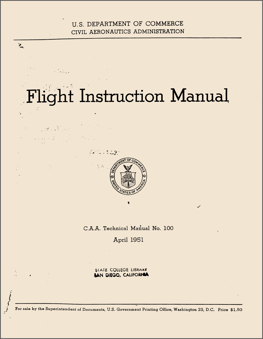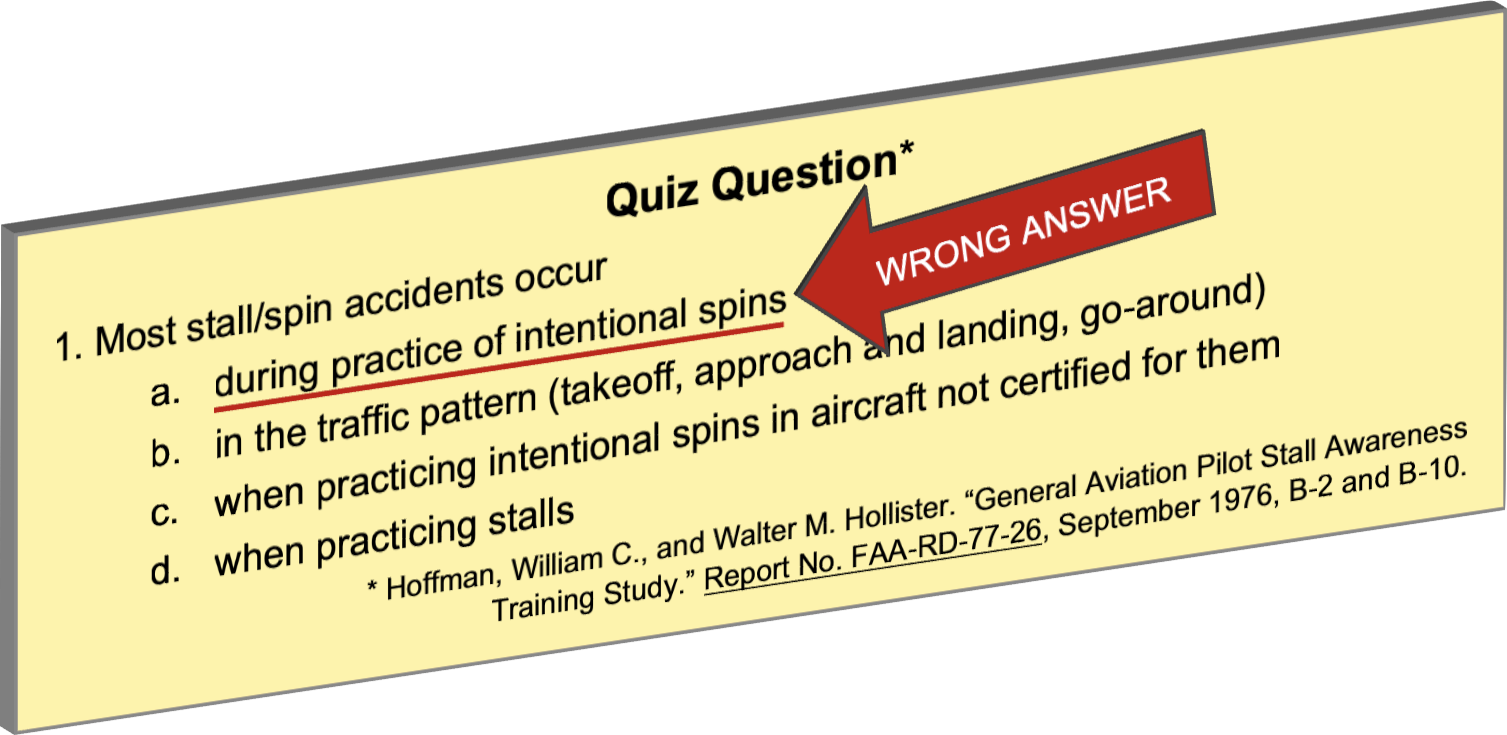Here’s a recent version of a longstanding myth about spin training:
“The Federal Aviation Administration (FAA) eliminated the spin training requirement from the private pilot syllabus in 1949, citing a high presence of stall/spin accidents in training flights.”[1]
But what was being said around the time mandatory spin training was deleted for private pilot certification? Have a look:

If spin training itself had been so dangerous back then, why wasn’t it being talked about?
Assume compulsory spin training had killed more pilots than it saved in the 1940s. Why would researchers and experts advocate for it decades later?

And if the human toll outweighed the benefit, why has the FAA continued to require spin training to become a CFI? Would becoming an instructor be worth the risk? What safety-conscious instructor would give spin training?
Hundreds of variables interact to affect spin behavior. Spin dynamics and the human factors involved are as complex as they are fascinating. The spin environment is also as demanding as the instrument environment. It’s as unforgiving of carelessness, too.
Flight instructor applicants used to have to demonstrate power-on spin entries from turns.[11] The only criteria now? An endorsement attesting to competency in stall awareness, spins, and spin recovery procedures. This is what often qualifies as having demonstrated “instructional proficiency” in spins:
The reality is most spin endorsements are participation trophies. This might explain why a “shocking” 91 percent of fatal stall/spin accidents during training have an instructor on board.[12] Yet if it’s that bad, why don’t more accidents occur during CFI spin training?

Almost half of fatal accidents during the period 1945–1948 were stall/spins. That had dropped to 28 percent during the period 1965–1973. Was that because of the shift in training philosophy? Or was it because better airplane designs flooded the market in the 1960s and ‘70s?
One researcher looked at fourteen single-engine designs with type certificates issued before 1950. Two decades after the amendment, the fatal stall/spin accident rate for this group was 42 percent. Thus, the fatal stall/spin accident rate “may be more strongly related to aircraft design than…the philosophy of pilot spin training.”[13]
If not for improved airplane designs, today’s stall/spin accident rate might look a lot different. And if not for the reluctance of these designs to spin, CFI spin training might indeed be more dangerous.
Professional spin training focuses on stall/spin awareness, prevention, and recovery. The training is delivered in the context of common accident scenarios. And it uses suitable spin training platforms.
For example, EMT Module I includes three hours each of ground and flight instruction. Trainees review stalls and spirals. They do normal and aggravated spins. They work through the startle associated with spins entered from unusual attitudes. They gain a deeper understanding and renewed confidence about stalls and spins. And they can get a spin endorsement.
If you are a CFI applicant, earn your spin endorsement by investing in quality spin training. CFI applicant or not, practice what’s in AC 61-67C, “Stall and Spin Awareness Training.” But first find out the depth of your instructor’s stall/spin experience. Because when it comes to preventing a fatal stall/spin, “an instructor on board is no guarantee.”[14]
[1] Fala, N. “An Analysis of Fixed-Wing Stall-Type Accidents in the United States.” Aerospace 2022, 9, 178. https://doi.org/10.3390/aerospace9040178
[2] Collins, L. “The Dangers of the Air.” In Langewiesche, W. Stick and Rudder (NY: McGraw-Hill, 1944), 323.
[3] Ibid.
[4] Ibid., 329.
[5] Quoted from Hoffman, William C., and Walter M. Hollister. “General Aviation Pilot Stall Awareness Training Study.” Report No. FAA-RD-77-26, September 1976, 8.
[6] Civil Aeronautics Administration. “Flight Instruction Manual.” C.A.A. Technical Manual No. 100, April 1951, 68.
[7] NTSB. “Special Study: General Aviation Stall/Spin Accidents.” NTSB-AAS-72-8, September 13, 1972, 18.
[8] Only in airplanes approved for intentional spins, of course. Silver, Brent W. “Statistical Analysis of General Aviation Stall Spin Accidents.” SAE Paper 76048, April 6–9, 1976, 10.
[9] Hoffman and Hollister, iii.
[10] Subcommittee on Investigations and Oversight. Spin Recovery Training (Committee on Science and Technology, U.S. House of Representatives, July 1980), 4.
[11] Civil Aeronautics Administration, 122.
[12] AOPA Air Safety Institute. Stall/Spin: Entry Point for Crash and Burn? 2003, 4.
[13] Silver, 3.
[14] AOPA, 4.
>> This post was written by a human <<
Sign up to receive an email whenever Rich Stowell publishes content